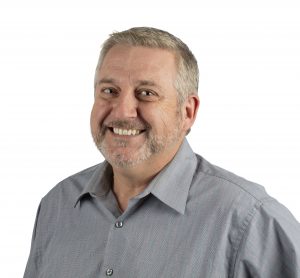 What’s a typical day like for you at Campbell Scientific?
What’s a typical day like for you at Campbell Scientific?
A typical day for Campbell Scientific is best described as “constant motion.” We have offices all over the globe. We have teammates working at any given time in Australia, Brazil, Canada, China, France, Germany, South Africa, the U.K. and, of course, headquartered here in Logan, Utah.
Campbell Scientific is committed to satisfying the measurement instrumentation needs of our customers, especially those who are working to advance science and technology for the benefit of humankind. Our products and services help fulfill this mission statement in a number of ways: From freezing road conditions in South Korea to forest carbon sequestration in Canada, we design, manufacture, and sell rugged dataloggers, data-acquisition systems, and telemetry products used worldwide in environmental, research, and renewable energy markets.
So, the typical day is one where we are assisting our customers with the project development and with current operational instrumentation and data collection requests for weather, infrastructure, water quality, solar, and the wind-energy market.
Why is wind measurement important for a successful wind farm?
Wind is your input that drives your economic output. So, understanding your resource can help you maximize your investment and create efficiencies that make renewable energy such an important sector in our energy production. Over the years, science has enabled us to be able to track, monitor, and predict where the strongest and most available wind is located.
More reliable data sets provide a stronger certainty or projection of the power available. Wind resource maps and modeling can provide a good starting point, but in order to get the best financing possible, you will need to remove uncertainties in your wind resource.
Data can be directly related to dollars in the U.S. wind industry, so the stronger and more robust data set, using the appropriate sensors, can often times get a wind site the additional “points” needed for successful and profitable operation.
Where do you see the wind industry in the next 10–20 years and your place in it?
In just a few years, we have witnessed U.S. onshore turbines increase capacity. This means that turbines can now be profitable in lower wind speed regimes. This added capacity has also led to a greater need for efficiency. The price of power (per MW) has dropped to its current price, so we see a greater need to accurately capture wind-resource data. This data not only needs to be very reliable, but it also requires ready access for the decision makers in our field. As financial margins get tighter, we believe the industry will seek flexibility in gathering data in wind. In my opinion, this is where remote sensing devices will come to the forefront for wind resource assessment and operational needs of a wind farm.
For example, let’s say that your typical wind farm has paid for itself well within the life expectancy of the site and your company wishes to leverage the performance of this site to build another site. Typically, you would have two, perhaps three, met towers across a wind farm. If you could place a remote sensing device (ZX Lidar unit or something similar) at selected locations across that park, you may be able to get a better data set that could remove uncertainties for the financiers. The cost associated with a temporary remote sensing campaign could give your company a better resource assessment and reduce the uncertainties.
In addition, the wind industry will see more requests from the off taker for grid parity and reliability. Campbell is actively developing new products and methods to ensure the reliability and compliance needs of the renewable energy sector. We will see more compliance needs and a stronger request for data certainty in the future.
Where do I see our place in the wind industry in the next 10-20 years?
I believe we are going to continue to see advancements in data acquisition and as a result, we will see even greater efficiencies in turbine and grid performance. We are already witnessing immediate access to critical data that increases safety and performance in the field. I see Campbell Scientific as a key component in the sector. an important sector.
More info www.campbellsci.com/energy



























